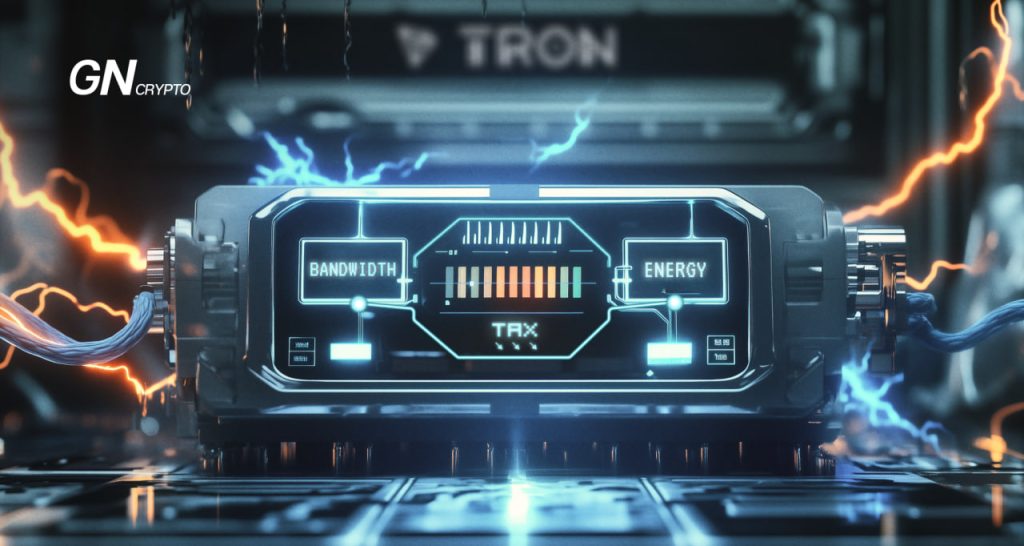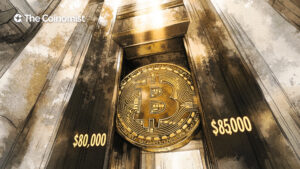How Tron Transaction Fees Work and How to Reduce Them

Blockchain transactions usually come with fees paid in the network’s native token (ETH for Ethereum, SOL for Solana, AVAX for Avalanche, etc.). However, in the case of the ever-popular Tron network, the fee structure is more complex than it might seem at first glance.
On this page
On August 16, 2024, the SunPump platform for creating meme coins launched on the Tron blockchain. Within its first week, 35,000 new tokens were created, generating profits between $300,000 and $500,000, with TVL peaking at $1.7 million.
This surge in popularity led to increased activity on the Tron network. Users who hadn’t previously interacted with Tron transferred assets into the network, executed cross-chain swaps, and more. Consequently, the total fees collected on the Tron blockchain more than doubled.
Tron Fees Volume. Source: defillama.com
Like most blockchains, Tron’s fees operate on a simple principle: the greater the network load, the higher the transaction costs. As a result, the increase in fees was driven not only by a growing number of users but also by rising transaction costs.
This begs the question: “Can I reduce Tron fees?” The good news is that the Tron blockchain offers (and has always offered) solutions to this.
How Tron Fees Work
Transaction fees in the Tron network help ensure its security and the timely processing of transactions. Additionally, revenue from these fees incentivizes users to run nodes and participate in the consensus process. Tron fees also serve to combat spam and various hacking attempts.
The Tron network operates with two key system resources: Bandwidth and Energy:
- Bandwidth is used for all types of transactions, primarily for everyday operations like transferring TRX or USDT between addresses.
- Energy is required to execute smart contracts.
It’s important to note that Energy is also used for “Transfer” transactions, but only for certain assets. For instance, transferring TRX does not require Energy, while transfers of TRC-20 tokens (such as USDT) do.
The size of transactions, measured in bytes (a unit of data storage), determines how much Bandwidth is required. As of August 2024, 1 byte equals 1 unit of Bandwidth. For example, a transaction that is 250 bytes in size would require 250 Bandwidth.
The amount of Energy required depends on the complexity of the smart contract: the more computational resources the Tron Virtual Machine needs to execute a contract, the more Energy is consumed. Energy can be thought of as fuel for a car—the longer the journey, the more fuel is needed.
You can limit the maximum Energy cost for a transaction by adjusting the fee_limit parameter.
Unlike Bandwidth, calculating the required amount of Energy is more complex. Tron uses a Dynamic Energy Model, which balances resource consumption based on the demand for smart contracts. This model introduces the variable energy_factor for each contract, which starts at zero and adjusts every six hours based on the contract’s usage. If a contract is heavily used during those six hours, future transactions involving that contract will require more Energy.
There’s no need to calculate Energy manually. Instead, it's better to rely on the average Energy consumption value, which was around 23,500 units as of August 2024.
Energy Usage (Green: Total Energy used, Purple: Average Energy usage). Source: dune.com
Every 24 hours, Tron users receive 600 free units of Bandwidth (which is enough for approximately two transactions, depending on the size). However, no free Energy is provided. Energy can only be obtained by burning or staking TRX (the same applies to Bandwidth).
Resources are used in the following priority order: resources obtained from TRX staking → daily free resources → resources gained from burning TRX.
How to Get Bandwidth and Energy Using TRX
Newly created Tron accounts do not automatically receive free Bandwidth. To activate an account and start receiving these resources, you need to either transfer any amount of TRX or TRC-10 tokens to the account. Another option is using the “wallet/createaccount” API, but this method is technically complex and not beginner-friendly.
Once activated, the account becomes a full participant in the Tron network and receives 600 Bandwidth every 24 hours (note that these do not accumulate). However, once the available Bandwidth is used up, the network will begin burning your TRX to provide the necessary Bandwidth for transactions. The same applies to Energy.
Burned TRX for Bandwidth = required Bandwidth * cost of 1 Bandwidth.
Burned TRX for Energy = required Energy * cost of 1 Energy.
As of September 2024, the cost of 1 Bandwidth is 1000 SUN (the smallest unit of Tron, similar to sats in Bitcoin or Gwei in Ethereum), which equals 0.001 TRX. The cost of 1 Energy is 420 SUN, or 0.00042 TRX.
How to Reduce Tron Fees
To avoid using TRX for transaction fees, users need to have enough Bandwidth and Energy in their account. Fortunately, these resources can be earned not only by burning TRX but also by staking TRX.
Instead of manually calculating the Bandwidth or Energy earned through staking, a simpler approach is to use the Resource Calculator. This tool, integrated into Tronscan, allows you to easily see how much Bandwidth or Energy you will gain by staking a certain amount of TRX.
Resource Calculator Interface. Source: tronscan.org
For those interested in the technical details, the formula for calculating earned Bandwidth or Energy through staking is as follows:
Earned Bandwidth or Energy = User's staked TRX for Bandwidth or Energy / Total TRX staked for Bandwidth or Energy * Maximum daily Bandwidth or Energy.
As of September 2024, the maximum daily Bandwidth is 43.2 billion, and Energy is 120 billion. You can check the current total TRX staked for Bandwidth or Energy on Tronscan.
Now, let's determine how much TRX needs to be staked to use the Tron network for free. Remember these key metrics:
- The average size of 1 transaction is 250 bytes.
- The average Energy required for 1 transaction is 23,500 units.
For example, if you want to perform 5 USDT transactions, you will need around 1,250 Bandwidth and 120,000 Energy. Entering these values into the Resource Calculator, you'll find that approximately 771 TRX is needed for Bandwidth and 15 TRX for Energy.
In total, to make 5 USDT transactions without paying fees, you would need to stake about 786 TRX (around $120 at the time of writing).
To stake TRX and receive Bandwidth and Energy, you’ll need a crypto wallet that supports Tron.
Important: Not all crypto wallets can provide Bandwidth and Energy from staking. For example, Trust Wallet offers staking rewards but doesn’t generate Bandwidth or Energy. Make sure to use Tron-native wallets like TronLink Wallet for this purpose.
Leasing and Selling Bandwidth and Energy
In addition to the methods outlined in this article, Bandwidth and Energy can be “rented” from external sources. There are dedicated platforms where you can lease Tron resources for TRX at a small premium. This is often more cost-effective than paying transaction fees by burning TRX directly on the Tron network.
Not only can you rent Bandwidth and Energy, but you can also lease out your own resources. This could be a profitable option for users who rarely use Tron but prefer to hold their assets on the network.
Final Words
Founded by Justin Sun in 2017, Tron is now the second-largest blockchain by total value locked (TVL), behind only Ethereum. And it continues to expand. On September 7, 2024, Sun announced further reductions in network fees. The cost of one unit of Energy will drop from 420 SUN to 210 SUN, while the maximum supply of Energy will increase from 120 billion to 150 billion.
Known for its high throughput, scalability, and low fees, Tron continues to attract new users. With the launch of SunPump, more crypto enthusiasts are discovering Tron's unique features, like Bandwidth and Energy.
The content on The Coinomist is for informational purposes only and should not be interpreted as financial advice. While we strive to provide accurate and up-to-date information, we do not guarantee the accuracy, completeness, or reliability of any content. Neither we accept liability for any errors or omissions in the information provided or for any financial losses incurred as a result of relying on this information. Actions based on this content are at your own risk. Always do your own research and consult a professional. See our Terms, Privacy Policy, and Disclaimers for more details.



























